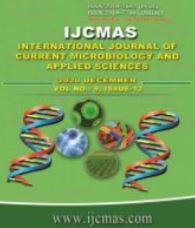


 National Academy of Agricultural Sciences (NAAS)
National Academy of Agricultural Sciences (NAAS)

|
PRINT ISSN : 2319-7692
Online ISSN : 2319-7706 Issues : 12 per year Publisher : Excellent Publishers Email : editorijcmas@gmail.com / submit@ijcmas.com Editor-in-chief: Dr.M.Prakash Index Copernicus ICV 2018: 95.39 NAAS RATING 2020: 5.38 |
A field experiment was conducted during Kharif 2015-16 at Main Agricultural Research Station, University of Agricultural Sciences, Dharwad to find out the physiological basis of yield variation of different maize hybrids. The experiment consisted of twenty maize hybrids replicated thrice in randomized block design. Observations recorded were morpho-physiological, biochemical, and yield and yield attributes. The hybrids DMH-01, DMH-13 and GPMH-1101 exhibited superiority over rest of the hybrids with respect to higher morphological (plant height, more number of leaves and total dry matter) and physiological parameters (SPAD, Chlorophyll, total sugar and starch content).Significantly higher yield and yield parameters such as cob length, cob girth, number of seeds per cob, number of seed rows per cob, 100-kernel weight and harvest index were recorded by DMH-01, DMH-13 and GPMH-1101 which increased the yield of maize hybrids. Significant improvement in overall growth of the crop was due to its increased photosynthetic efficiency which resulted in greater availability of photosynthates, metabolites and increased dry matter accumulation for growth and development of reproductive structures which has contributed for higher productivity.
 |
 |
 |
 |
 |